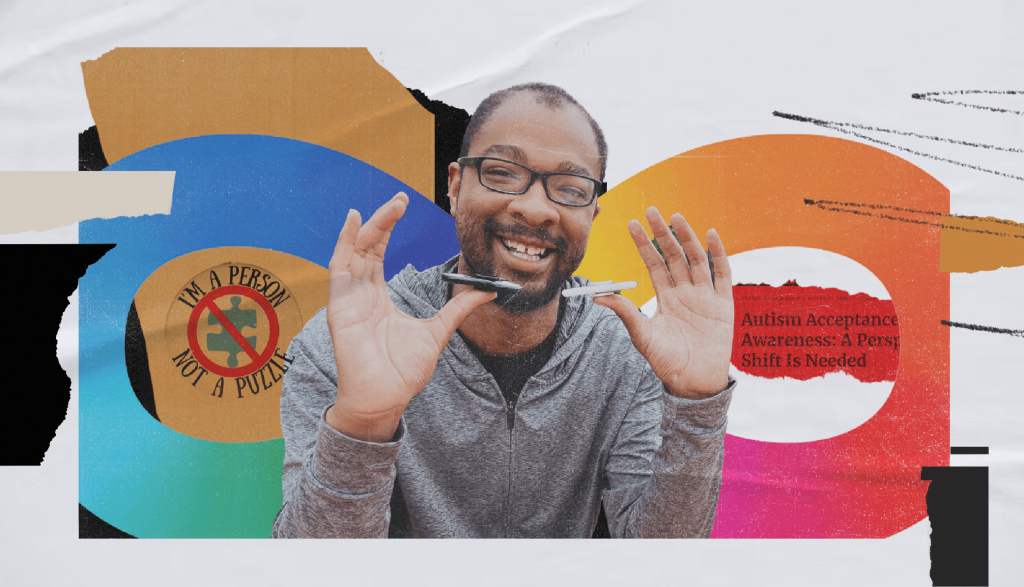As we move into Autism Acceptance Month this April, it’s crucial to approach our support for the autistic community with sensitivity and understanding. This month is not just about raising awareness but also about fostering an environment of acceptance, understanding, appreciation, and support for autistic individuals. Here are some ways to make a meaningful difference during this time and beyond:
Diverse Representation:
- The problem: Autistic representation should not be limited to a narrow demographic. Representation has commonly been, and still largely is, associated with young white boys or men.
- Some solutions: Amplify the voices of diverse autistic individuals, including Indigenous, Black, and People of Color (IBPOC), women and gender-diverse individuals who have been both significantly underrepresented and underdiagnosed (receiving a diagnosis is much more difficult for those who are not white men or boys). Question the idea that there is a single set of external behaviours that define autism. Autism is a constellation of traits, experienced and expressed differently between individuals. Many autistic individuals can also mask autistic behaviour, meaning some autistic people can appear neurotypical.
Avoid Ableist Symbols
- The problem: The blue puzzle piece symbol, while once widely used, is controversial within the autistic community. Many find it stigmatizing and dehumanizing, suggesting that autistic individuals are incomplete or need to be “solved.” It was also introduced by Autism Speaks, which is widely viewed as a hate organization among autistic people.
- Some solutions: Instead, use symbols that promote acceptance and celebrate neurodiversity, such as the rainbow infinity loop or the gold infinity loop, which represent autism acceptance and the broader concept of neurodiversity. Also, wearing red (introduced by autistic activist, Alanna Rose Whitney) during April can be a way to support the autistic community, which opposes the harmful use of the blue puzzle piece.
Use Inclusive Language
- Problem: There has been an insistence by allistic (non-autistic) people on using person-first language for autism. This means saying someone “has autism” rather than calling someone “autistic”.
- Some solutions: Many in the autistic community have been advocating for the use of identity-first language. This means saying “Autistic people”, rather than “people with autism”. This reflects the inherent identity and lived experience of autistic people, and that autism is an inseparable part of autistic people’s identities and experiences. However, it’s also essential to acknowledge that language preferences vary among individuals. While many prefer identity-first language, others may feel differently. When referring to individuals, be sure to use the language that people use for themselves.
Shifting our Perspective
- Problem: Autism is often framed and spoken about from a medicalized, deficit perspective. It’s assumed that being neurotypical is “normal” and “right” and being autistic is “abnormal” and “wrong”.
- Some solutions: It’s important to view autism and other neurological differences not as deficits or medical conditions, but as natural variations in the human experience. This shift in lens transforms autism from a collection of deficits to a unique identity shaped by individual experiences. By looking at neurodivergence as neutral and natural, we emphasize that being autistic is neither a positive nor a negative; it presents a mix of strengths and challenges, like each and every neurotype.
- Additionally, embracing a social disability model (as opposed to the medical model) challenges us to see disability not as an inherent barrier to the individual. Instead, societal barriers that prevent inclusion and support are the problem. This viewpoint underscores that every autistic person deserves the same opportunities for success and fulfillment as neurotypical individuals. The real problem lies not in the individual’s limitations, but in the societal structures that hinder their participation and access to opportunities.
Autism Acceptance Month is an opportunity to reflect on your own attitudes and behaviours towards autism and autistic people. It’s also a time to reassess how you can continue to support and uplift the autistic community in your daily life. Autism is an integral part of human diversity, and acceptance is about recognizing and embracing that diversity from a human-first lens. By embracing these ideas and others, we can work towards creating a world where autistic individuals – and all presentations and experiences of autism – are valued and empowered.









